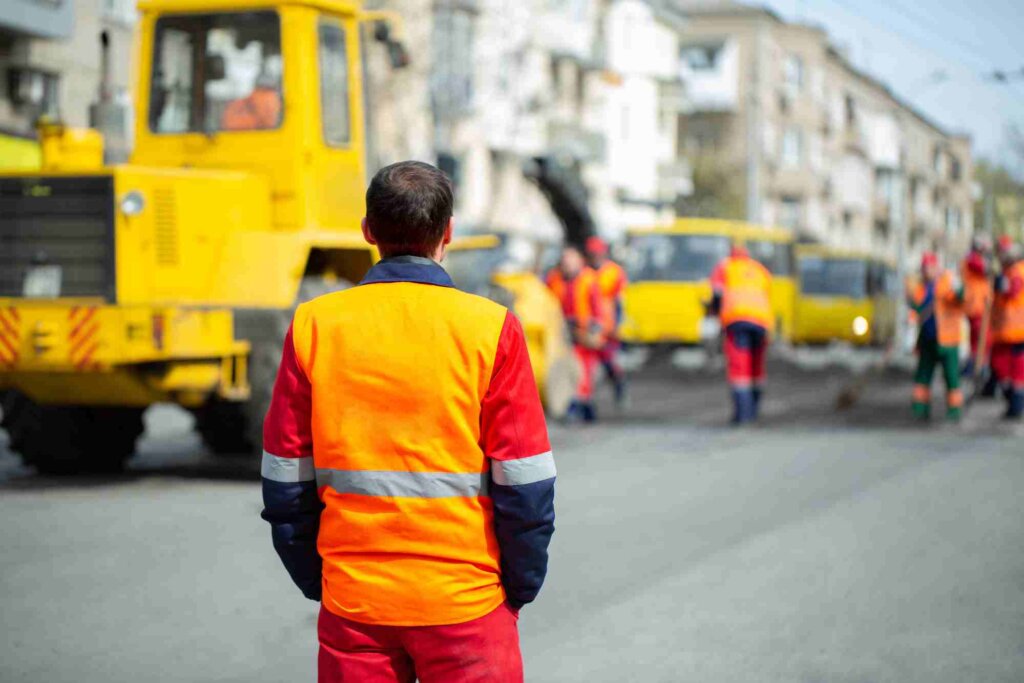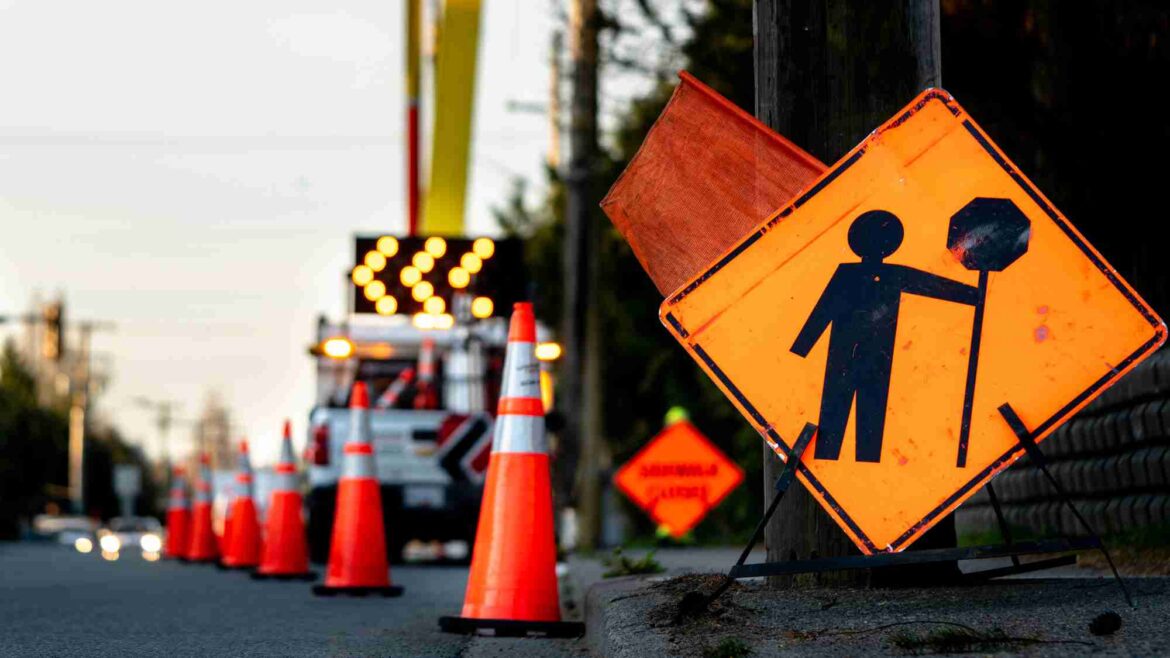A traffic management plan is a comprehensive document detailing how traffic flows at a busy site. Specifically, it contains relevant information such as layouts, texts, drawings, and figures to control traffic on a construction site to guide and fast-track the movement of workers, materials, and heavy equipment on a work site.
It helps determine if there will be special restrictions or requirements during the construction of a property. A traffic management plan aims to reduce traffic congestion while allowing workers to do their jobs uninterrupted. So, considering all factors that affect traffic flow help planners develop effective traffic management plans.
Overview Of A Traffic Management Plan
Developing a traffic management plan early on in the project is essential, as this ensures smoother operations and helps avoid delays. A good traffic management plan will also provide valuable information about how many vehicles will likely be using the site and at what times of day or night, which allows you to make informed decisions, especially during busy hours.
The expertise of traffic management companies in this field is invaluable, as they have a wealth of knowledge to make things easier. So hiring a professional traffic management company is best if you’re planning a project and need help managing traffic. They have trained staff who will provide you with the best advice on successfully managing your construction site and avoiding delays or disruptions in the future.
Things To Include In A Traffic Management Plan
The traffic management plan can only be efficient and successful if it includes all the necessary information. The following are some of the most important things to include in a traffic management plan:
- Speed Limits
The speed limit should be marked on all major roads leading into the construction site. It will help drivers know how fast they should drive when approaching the area. It will also help workers stay safe while operating their vehicles onsite.
In addition, there should also be speed bumps or other obstacles placed on these roads to prevent drivers from speeding through them at high speeds. It will ensure the safety of your drivers and the workers on site.
- Traffic Cones
Traffic cones are an essential part of any construction site and are used to control traffic flow. They’re used to mark off areas off-limits to vehicles, which helps keep workers safe and prevents damage to the road surface and curbside landscaping. When drivers see these cones, they know not to drive through them.
Also, traffic cones mark off areas that need to be dug up or repaired. It allows workers to do the necessary work without cars driving over them.
- Signages
Signages such as ‘cautions,’ ‘bumps ahead, limit speed,’ and ‘road closed’ are essential to alert drivers of dangerous situations. These signs help protect everyone from harm and are used as a secondary safety measure when cones and barriers are unavailable. Signages also keep drivers from getting lost, which is essential for large construction sites with multiple entrances and exits.
For instance, a sign that says ‘road closed’ will prevent drivers from driving through the area, which can cause accidents and injuries. The same goes for ‘cautions’ and ‘bumps ahead’ signs which help drivers to be aware of potential hazards.
- Parking Restrictions
The inclusion of parking restrictions allows drivers to know where they can and cannot park their vehicles. It’s especially important for large construction sites with multiple entrances and exits. Parking restrictions are used to prevent drivers from parking in areas that would cause damage or otherwise hinder the progress of construction workers.
Other restrictions include ‘no parking,’ ‘no stopping,’ ‘handicapped spaces,’ and ‘loading zones.’ These signs inform drivers about the rules that apply in certain areas and prevent them from breaking them.
- Barricades
Barricades are an essential tool for preventing accidents on a construction site. That’s because they offer total control over the movement of traffic. Barricades help close off roads, redirect traffic, and prevent access to certain areas where construction is ongoing.
Depending on the contractor’s intended use, barricades are designed with different colors and shapes. Most barricades are in the form of a rectangle. They ensure the free flow of work at the construction site, preventing vehicles from entering.
- Pedestrian Walkways And Crossing Signals
Pedestrian walkways and crossing signals are used to guide pedestrians through an area. A pedestrian walkway is a strip of pavement that is designated for use by pedestrians only. These paths are between the sidewalk and the road, separating cars from pedestrians so they remain safe while crossing roads.
A pedestrian crossing signal allows pedestrians to cross an intersection without worrying about getting hit by a car. It consists of a series of line marks and lights that let pedestrians know when it is safe to cross the street. The lights also come in different forms, including push buttons or automatic sensors.
- Emergency Vehicle Access Road
An emergency vehicle access road or path is a road or path that allows ambulances, fire emergency trucks, and police cars to get through on their way to an emergency quickly. These roads are usually marked with unique signs that let drivers know they cannot use them at any time except for emergencies. So, it’s one of the top considerations to be included in a traffic management plan.
The main importance of emergency vehicle access is that it can save lives. If there’s an accident or some other emergency on-site, the ambulance or fire truck must get there as quickly as possible to help whoever is hurt.
The Importance Of A Traffic Management Plan

Traffic management plans are essential for construction companies because of the following:
- Free Flow
Traffic management plans help ensure the free flow of traffic on construction sites. It’s important because it helps avoid congestion and delays, which can strain workers’ deadlines and schedules. If you want your project to run smoothly, immediately ensure one is in place.
- Safety
Traffic management plans are vital because they help to keep construction workers, commuters, and pedestrians safe. The plan helps show where all the equipment, vehicles, and people need to be at all times so that there is no danger of accidents happening around the site during construction.
- Enhance Productivity
Traffic management plans are also necessary because they help to enhance worker productivity. Workers can do more in less time when the construction site is appropriately managed. It helps ensure that projects stay on schedule and within budget.
Conclusion
Traffic management plans are a crucial part of any construction project. Without them, there’s a good chance that something will go wrong. The plans help everyone involved in the project stay on track and ensure everything goes as smoothly as possible.
Also, the plans ensure workers’ and public safety and improve traffic flow in the area. So, plans must be created before work begins and regularly updated when required.
